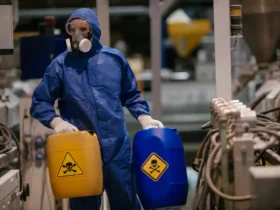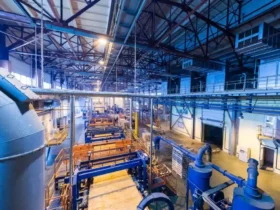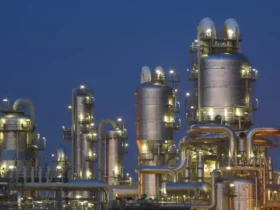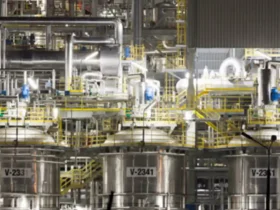
Chemical processing plants are intricate environments with a wide array of machinery, equipment, and systems that operate under harsh conditions. Keeping these assets in optimal working order is vital for safety, efficiency, and profitability. Traditionally, maintenance practices have been either reactive (fixing things after they break) or preventive (routine checks based on time or usage). However, with the rise of Artificial Intelligence (AI), predictive maintenance is rapidly becoming the new standard in chemical processing industries.
What is Predictive Maintenance?
Predictive maintenance involves using data-driven tools to predict when equipment is likely to fail, allowing repairs or replacements to be made just in time—before a breakdown occurs. This approach minimizes downtime, reduces costs, and extends the lifespan of machinery.
AI plays a pivotal role in enhancing predictive maintenance by analyzing large datasets from sensors, historical records, and operational logs to detect patterns that signal upcoming issues.
Why Predictive Maintenance Matters in Chemical Plants
Chemical plants often operate continuously, and unplanned downtime can result in severe financial losses, safety hazards, and environmental risks. Here’s why predictive maintenance is critical:
- High Operational Costs: Equipment failure can halt production, leading to substantial revenue losses.
- Safety Concerns: Faulty machinery increases the risk of accidents involving hazardous chemicals.
- Regulatory Compliance: Unplanned events can lead to violations of environmental and safety regulations.
By using AI to anticipate issues before they arise, predictive maintenance helps mitigate these risks effectively.
How AI Enhances Predictive Maintenance
AI technologies—particularly machine learning (ML), deep learning, and data analytics—bring transformative improvements to predictive maintenance in several ways:
1. Sensor Data Analysis
Chemical plants are outfitted with numerous sensors monitoring temperature, pressure, vibration, flow rates, and more. AI algorithms analyze real-time sensor data to detect anomalies that may indicate early signs of equipment wear or failure.
2. Pattern Recognition and Trend Forecasting
Machine learning models learn from historical maintenance and failure data to recognize recurring patterns. These models can then forecast future equipment behavior under similar conditions.
3. Fault Diagnosis
AI systems can pinpoint the root causes of issues more accurately than human operators. For example, if a pump shows abnormal vibrations, AI might determine whether it’s due to misalignment, imbalance, or cavitation.
4. Maintenance Scheduling Optimization
AI helps in scheduling maintenance activities at the most opportune time, aligning with production cycles and minimizing operational disruptions.
5. Digital Twins
Digital twins—virtual replicas of physical systems—use AI to simulate equipment performance under different scenarios. These simulations aid in identifying potential failure points before they happen.
Real-World Applications and Case Studies
Case 1: Shell’s Smart Maintenance System
Shell has implemented AI-powered predictive maintenance across several refineries and chemical plants. Using machine learning models trained on historical equipment data, Shell has successfully predicted failures in compressors and heat exchangers days or weeks before they occur, allowing preemptive maintenance.
Outcome:
- Up to 20% reduction in maintenance costs
- 30% decrease in unplanned downtime
Case 2: BASF and Predictive Maintenance with IoT
BASF uses AI in combination with IoT sensors across its chemical plants. One notable implementation is on rotating equipment like agitators and centrifuges. The data collected is analyzed to detect wear patterns and prevent catastrophic failures.
Outcome:
- Improved equipment reliability
- Extended asset life
Benefits of AI in Predictive Maintenance
- Reduced Downtime: Anticipating failures means fewer unplanned shutdowns.
- Cost Savings: Targeted maintenance avoids unnecessary replacements and overtime labor.
- Safety Enhancements: Early warnings reduce the risk of hazardous incidents.
- Data-Driven Insights: AI provides actionable insights that help improve overall plant performance.
- Asset Optimization: AI can help determine optimal operating conditions for maximum equipment longevity.
Challenges in Implementing AI-Based Predictive Maintenance
While AI presents many opportunities, there are also challenges:
- Data Quality: Poor or insufficient data can lead to inaccurate predictions.
- Integration: Incorporating AI into existing infrastructure can be complex.
- Skill Gap: Operating and maintaining AI systems requires skilled personnel.
- Initial Investment: High upfront costs may be a barrier, especially for smaller plants.
Despite these hurdles, the long-term benefits of predictive maintenance often outweigh the initial difficulties.
The Future Outlook
As AI technology matures and becomes more accessible, predictive maintenance will become standard practice in chemical processing. Innovations such as edge computing, cloud-based platforms, and automated machine learning will further streamline implementation.
The integration of AI with other technologies, such as blockchain for secure data sharing and augmented reality for guided maintenance, is also on the horizon.
Artificial Intelligence is revolutionizing maintenance strategies in chemical processing by making them smarter, more proactive, and cost-efficient. Predictive maintenance powered by AI not only helps prevent costly failures but also contributes to safer, more sustainable plant operations.
As the chemical industry continues to embrace digital transformation, the role of AI in predictive maintenance will only grow, making it an essential tool for modern plant management.








Leave a Reply